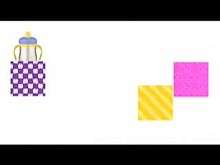Goldilocks principle
The Goldilocks principle states that something must fall within certain margins, as opposed to reaching extremes. When the effects of the principle are observed, it is known as the Goldilocks effect.
The Goldilocks principle is derived from a children's story "The Three Bears" in which a little girl named Goldilocks finds a house owned by three bears. Each bear has its own preference of food and beds. After testing all three examples of both items, Goldilocks determines that one of them is always too much in one extreme (too hot or too large), one is too much in the opposite extreme (too cold or too small), and one is "just right".[1]
The Goldilocks principle is applied across many disciplines, particularly developmental psychology, biology,[2] economics and engineering.
Applications

In cognitive science and developmental psychology, the Goldilocks effect or principle refers to an infant's preference to attend to events which are neither too simple nor too complex according to their current representation of the world.[3] This effect was observed in infants, who are less likely to look away from a visual sequence when the current event is moderately probable, as measured by an idealized learning model.
In astrobiology, the Goldilocks zone refers to the habitable zone around a star. The Rare Earth Hypothesis uses the Goldilocks principle in the argument that a planet must neither be too far away from, nor too close to a star and galactic center to support life, while either extreme would result in a planet incapable of supporting life.[4] Such a planet is colloquially called a "Goldilocks Planet".[5][6]
In medicine, it can refer to a drug that can hold both antagonist (inhibitory) and agonist (excitatory) properties. For example, the antipsychotic Aripirazole causes antagonism of Dopamine D2 receptors in areas such as the Mesolimbic area of the brain (which show increased dopamine activity in psychosis), but also agonism of Dopamine receptors in areas of dopamine hypoactivity, such as the mesocortical area.
In economics, a Goldilocks economy sustains moderate economic growth and low inflation, which allows a market-friendly monetary policy. A Goldilocks market occurs when the price of commodities sits between a bear market and a bull market. Goldilocks pricing is a marketing strategy that, although not directly related to the Goldilocks principle, uses product differentiation to offer three versions of a product to corner different parts of the market: a high-end version, a middle version and a low-end version.
In communication, the Goldilocks principle describes the amount, type and detail of communication necessary in a system to maximize effectiveness while minimizing redundancy and excessive scope on the "too much" side and avoiding incomplete or inaccurate communication on the "too little" side.[7]
See also
References
- ↑ Story of Goldilocks
- ↑ Martin, S J (Aug 2011). "Oncogene-induced autophagy and the Goldilocks principle.". Autophagy 7 (8): 922–3. doi:10.4161/auto.7.8.15821. PMID 21552010. Retrieved 17 January 2012.
- ↑ The Goldilocks Effect: Human Infants Allocate Attention to Visual Sequences That Are Neither Too Simple Nor Too Complex
- ↑ The Goldilocks Principle: A Model of Atmospheric Gases
- ↑ Muir, Hazel (25 April 2007). "'Goldilocks' planet may be just right for life". New Scientist. Retrieved 2009-04-02.
- ↑ "The Goldilocks Planet". BBC Radio 4. 31 August 2005. Retrieved 2009-04-02.
- ↑ http://vividmethod.com/goldilocks-communication-just-the-right-amount-of-information/
| ||||||||||||||||||